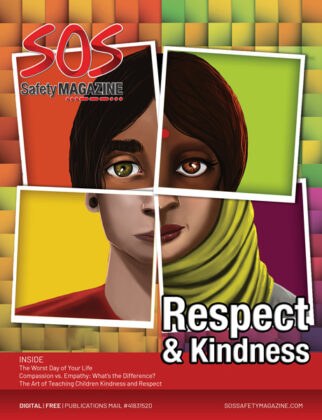ARTICLES, INTERNET SAFETY. FACTS ABOUT CYBER BULLYING, WHAT IS BULLYING? HOW TO STOP KIDS BULLYING NOW
Why Bullying Has Morphed and Changed in the Social Media Age

Conversations about bullies used to involve a few core stereotypes, like the kid that pushed you down and took your lunch money. Or the mean girl who spread nasty rumours about you. Maybe the hazing that would happen to a new student.
Of course, these were never the only forms of bullying. Bullying, at its core, is any repeated behaviour that is meant to make someone suffer.
It doesn’t matter if that suffering is physical, emotional, or mental. If it’s caused by repeated behaviour, it’s bullying.
And while there have always been multiple forms of bullying, new forms like the “cyberbully” have risen in the last few years. They are largely driven by the increasing use of social media. Just as there are many forms of social media, there are many forms of social media-driven bullying.
But the real question is: why? Why have these new forms risen? What makes them so much more appealing than in-person bullying? Why is it so hard to put an end to?
Here are just a few contributing factors:
Anonymity
The biggest change in bullying in the age of social media is the appearance of anonymity. Some people simply refuse to acknowledge that there is another person on the other side of their online actions. All they see is an avatar and a computer screen.
In reality, they know another human will suffer. They simply can’t care the same way they would if they were face-to-face with that person.
Many people will also be more bold with their online bullying because they feel they themselves are anonymous, and thus unaccountable for their actions. And, in some cases, they are.
VPNs (virtual private networks) and other technological advances are useful in protecting your security online… but they can also make it hard to track down online bullies.
Numerous anonymous messaging and confession apps have popped up in the last ten years or so. Many have come and gone in that time, but the concept remains. And it seems that online bullies thrive on these platforms.
Bullies can pop up on any type of app or social media site, thanks to perceived anonymity. Even apps with very positive intentions can have downsides.
For example, many fitness and health apps have been created with the goal of helping other people become healthier. But there are a few negatives of fitness apps, like the chance to “fat shame” or otherwise bully on community message boards.
There are upsides to online anonymity, especially in the age of “cancel culture” (keep reading to learn more about this). But if you or someone you love is being bullied on one such platform, it may be best to leave the platform.
When bullies can hide behind the veil of secrecy, they will continue their behaviour.
Cancel Culture
If you have not had personal experience with “cancel culture,” you’re quite fortunate. The trend seems to thankfully be on the decline.
While the term is usually used in reference to celebrities, it has also been used on companies and even everyday people. Although the effects are occasionally short-lived, they have also ruined careers and public lives.
At its worst, cancel culture will rely on opinions and posts made years ago. This then leads to present-day public shaming in which any growth the person has made since the original comment is ignored.
While hateful opinions and behaviours should be corrected, bullying people in response is not the answer. Callout or cancel culture is, unfortunately, ill-equipped to handle this distinction.
People targeted in these situations are often subject to so many negative comments that they delete their social media presence altogether. In some cases, the messages are simply angry in tone. But in their worst form, these messages can be threats or even urges for the target to take their own life.
Cancel culture is especially toxic among teens. In some cases, even questioning the truth in a “callout” can lead to additional people being cancelled.
In these cases, they are seen as being supporters of whatever behaviour is under fire. It doesn’t help matters that online callouts usually rely on screenshots or other “receipts,” which are easy to fake.
Creative Lying and Fake “Receipts”
The Internet is home to many wonderful things. You can meet new people, and it’s easier than ever to edit photos or create social media posts to tell stories in new ways. There are many creative benefits to these sites and applications.
But just as easily as you can enhance your own vacation photos, you can create edited photos that show something far from the truth… as well as fake text messages or social media posts. These easily constructed fakes also make it easier to lie about people.
While some people need to see the original post before they make their judgement, others are not so careful. They will take a fake image at face value and react accordingly.
This makes it much easier for bullies to convince people that their targets “deserve” to be bullied. Most people are not taught to react to negative behaviour with compassion. So, when they see someone that they believe is probably in the wrong, it becomes a sort of bullying dogpile.
The Takeaway
Bullying is dangerous. It doesn’t matter if it’s directed at you or someone you care about, adult or child. It’s a dangerous, damaging behaviour that has thankfully been thrust into the spotlight in recent years.
When you’re facing down something like bullying, it might not seem important to understand the why. After all, shouldn’t it be enough to want the behaviour stopped?
The answer is yes, it should be enough. But few problems can be properly solved without understanding their roots. Luckily, there are some social media apps working to end negativity, but it’s definitely an uphill battle.
Knowing why bullying has changed alongside social media will help you and your loved ones stay safe. Until a true solution for bullying can be reached, protecting yourself is the best option available.
Maybe one day, bullying truly will be put to an end. Until then, stay safe.
Article written by Trevor McDonald







